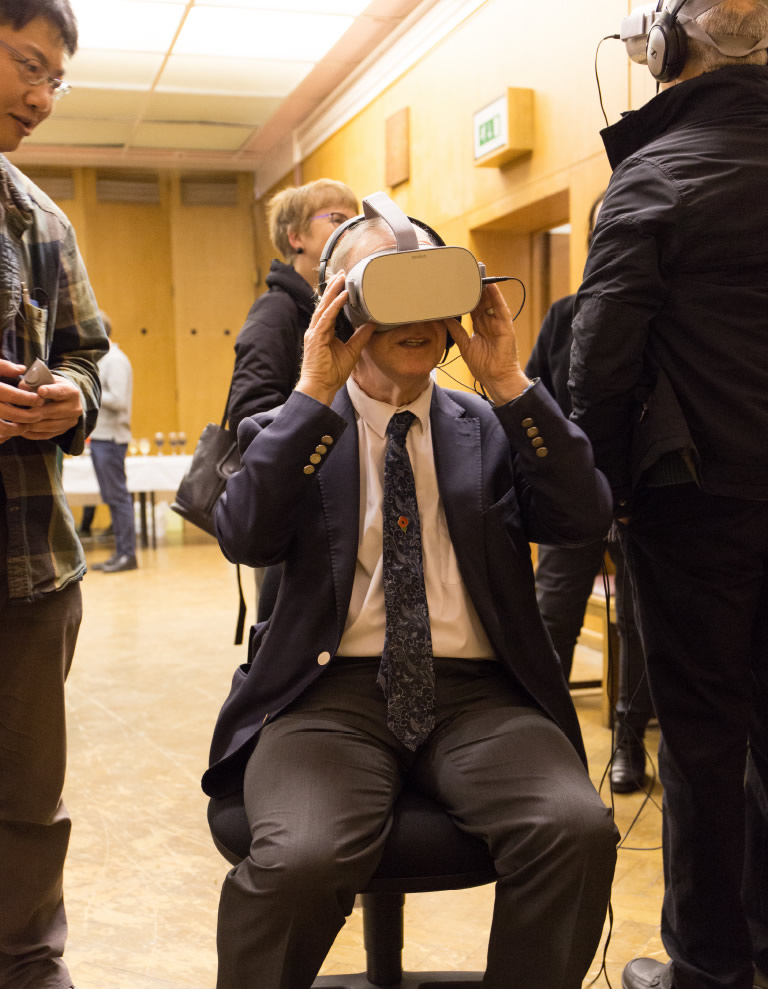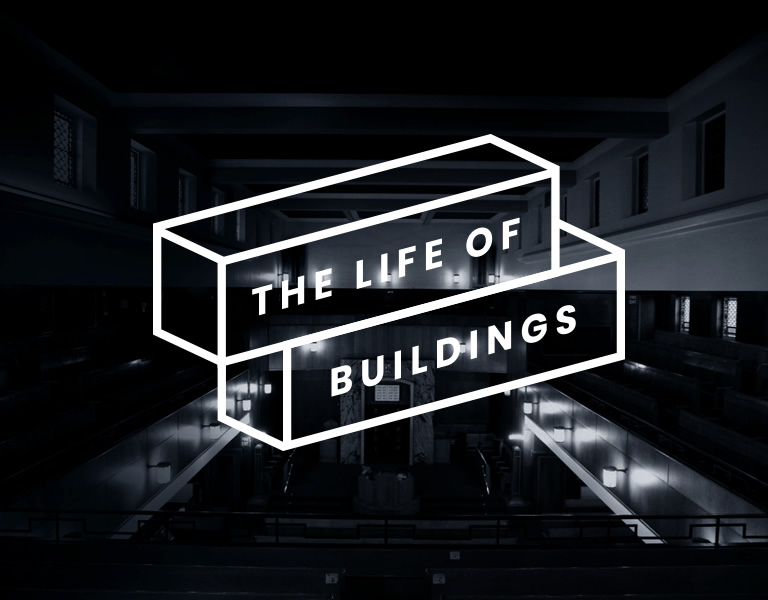In a few words
In an innovative project that brings together the planning and heritage spheres, The Life of Buildings project saw us partnering on a research project setting out to explore the technological boundaries of recording spaces and places before they are lost to the past forever.
Key challenges
“Cities change, so how can digital media technology store the memory of what has been lost?” This was the question posed by The Life of Buildings, an Arts and Humanities Research Council Creative Economy Programme funded project that saw us working alongside architecture academics, social historians and archeologists.
The research set out to establish the challenges associated with producing high definition virtual reality experiences that could simultaneously record real physical spaces and social history archives as part of an immersive user experience. The objective was to create an experience deliverable through headset based VR technologies like Oculus Rift or Microsoft HoloLens but also scalable enough to be made available via the web in a browser.
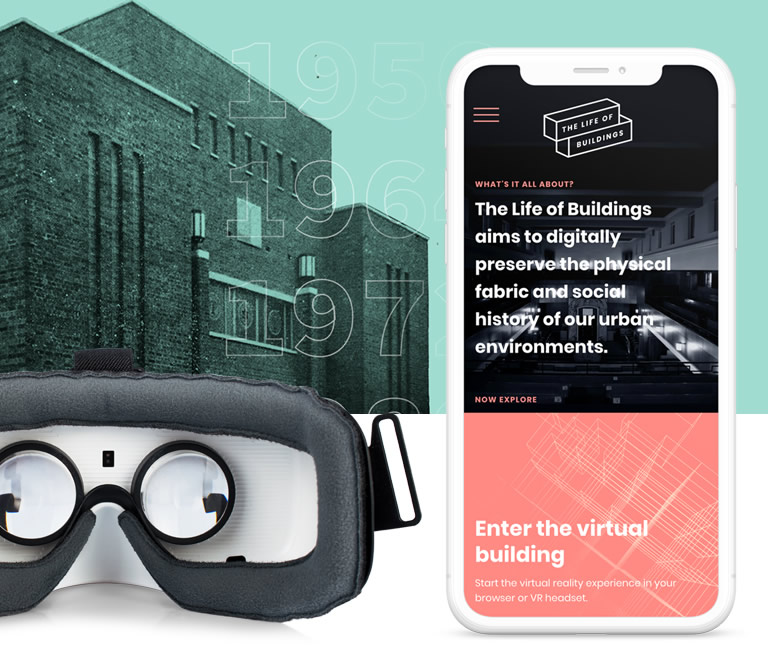
The site chosen as the test-case for the project was the The Manchester Reform Synagogue on Jackson’s Row in Manchester City Centre. The building is the subject of development speculation which will redevelop the area with the loss of the original building, which was the first major building to be constructed in the city center after the end of World War II.
Fablr were appointed to the project by the Manchester School of Architecture from the early funding application stage as specialists to advise on, design and develop of a digital platform to support the project and share its research outputs.
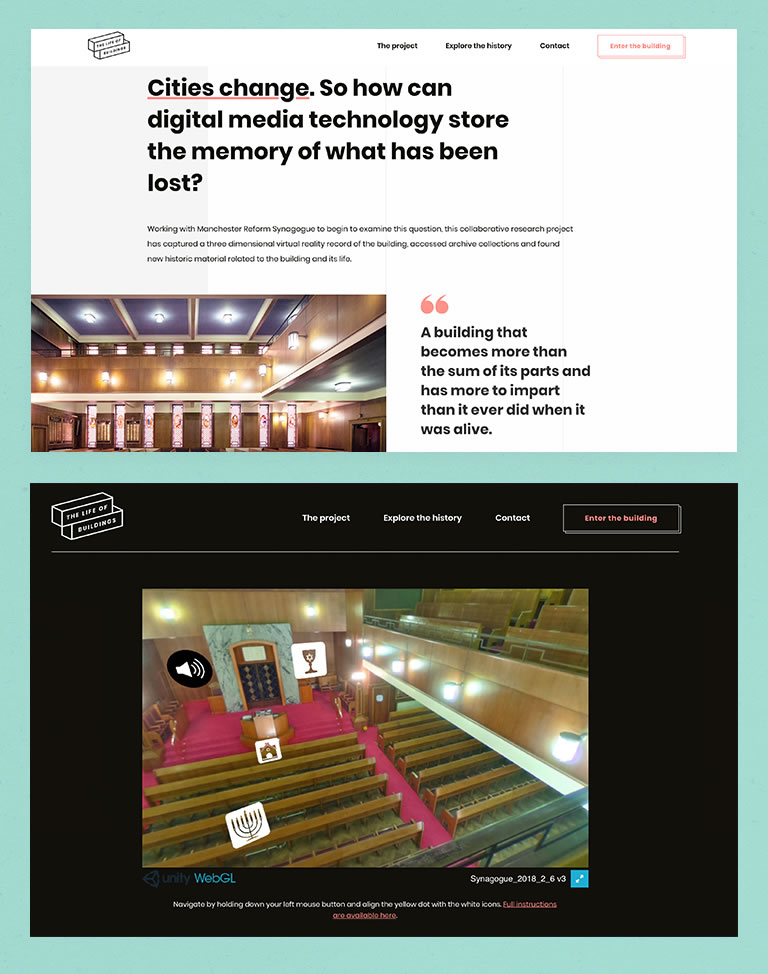
Approach
In the virtual reality experience we have created, the participant can move between a series of three-dimensional views both virtually inside and outside of the synagogue. We have presented the main spaces of the building using a mixture of data from photogrammetric, laser scan and 3D photography.
The involvement of oral historians and professional archivists meant that the project would generate outputs that extended beyond the VR implementation and these would need to be presented as part of the documentation of the project. Interviews and scanned archive materials would need to be accessible as part of the resource.
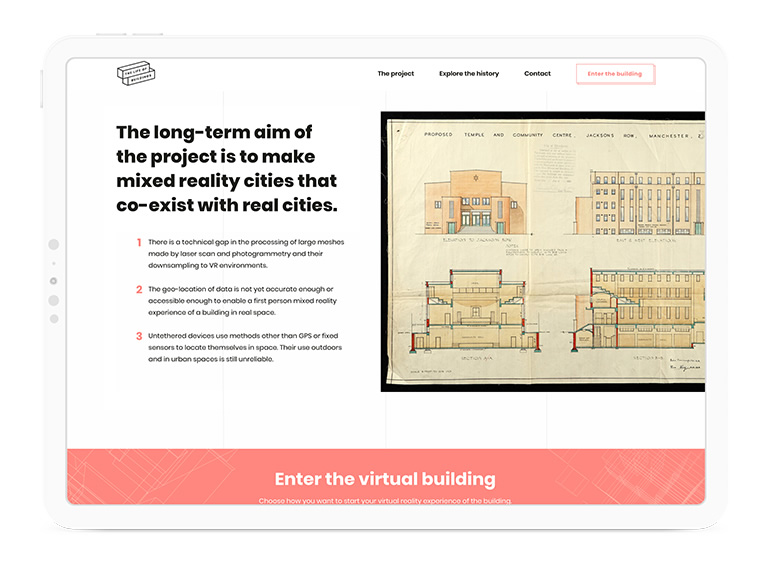
Delivery
We developed a simple, understated but contemporary brand identity for the project. We then designed and developed a managed online project website that would share the research and offer the component outputs of the project – the VR model, photography and archive scanned documents together with specially commissioned oral history recordings. One of the true highlights of project was the positive response from members of the Manchester Reform Synagogue.
Kevin Tan, who was at the time a Senior Lecturer in Computer Games and Computer Science at Manchester Metropolitan University led the Unity development for the project. Within the model, the participant can move between a series of three-dimensional views both virtually inside and outside of the synagogue. The main spaces of the building are rendered using a mixture of data from photogrammetric, laser scan and 3D photography.
A key learning point from the research was the current technical gap in the processing of large meshes made by laser scan and photogrammetry and their downsampling to VR environments. In other words, the sheer quantity of 3D and textural data that technologies like Lidar surveying generates presents challenges for offering rich experiences on untethered devices such as smartphones. The challenge for democratising the experience for mobile and other untethered devices for this kind of survey-based VR experience will form the basis of future proposed research.
